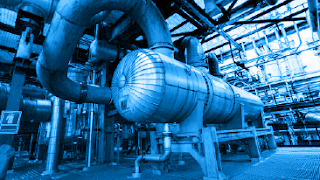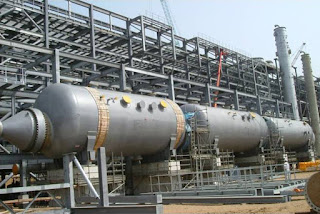What do you know about heat exchangers and their types?
As the name implies, heat exchangers are used to transferring heat. Read this article for a more complete explanation as well as a review of different types of heat exchangers.
What is a heat exchanger?
A heat exchanger is a system used to transfer heat between two or more fluids. Heat exchangers are used in both cooling and heating processes. The fluids may be separated by a solid wall to prevent mixing or they may be in direct contact. They are widely used in space heating, refrigeration, air conditioning, power stations, chemical plants, petrochemical plants, petroleum refineries, natural-gas processing, and sewage treatment. The classic example of a heat exchanger is found in an internal combustion engine in which a circulating fluid known as engine coolant flows through radiator coils and air flows past the coils, which cools the coolant and heats the incoming air. Another example is the heat sink, which is a passive heat exchanger that transfers the heat generated by an electronic or a mechanical device to a fluid medium, often air or a liquid coolant.

Solar water heating systems use three types of heat exchangers:
Liquid-to-liquid
A liquid-to-liquid heat exchanger uses a heat-transfer fluid that circulates through the solar collector, absorbs heat, and then flows through a heat exchanger to transfer its heat to water in a storage tank. Heat-transfer fluids, such as antifreeze, protect the solar collector from freezing in cold weather. Liquid-to-liquid heat exchangers have either one or two barriers (single wall or double wall) between the heat-transfer fluid and the domestic water supply.

Types of Heat Exchangers
These machines are usually classified according to their flow arrangement and type of construction. The simplest heat exchangers are those that the hot and cold fluids flow in the same or opposite directions. These kinds of heat exchangers consist of two concentric pipes of different diameters and are parallel-flow arrangement and counter-flow arrangement.
Parallel-flow Arrangement: In the kind of parallel-flow heat exchangers, the hot and cold fluids enter at the same end, move in the same direction, and leave at the same end. more information
You can also refer to the following resources to learn more about heat exchangers.
References:
https://www.linquip.com/blog/types-of-heat-exchangers/
https://www.energy.gov/energysaver/heat-exchangers-solar-water-heating-systems
- ۹۹/۱۱/۰۴